This story originally appeared in i-D’s The New Wave Issue, no. 373, Fall/Winter 2023. Order your copy here.
Raul Lopez is hardly a designer known for restraint. Under the banner of his semi-eponymous label Luar (spoiler: it’s his first name backwards!) he’s earned his stripes creating garments imbued with an unabashed, straight-outta-90s Brooklyn bolshiness, resulting in exaggerated silhouettes, more often than not inhabited by even more exaggerated personalities. It’s this same sense of ‘extra’ that has come to define the brand’s shows — now the toast of New York Fashion Week — which appear more akin to a ballroom runway than a conventional fashion show, where swaggered walks, stormy strides and jaunty poses are met by screeches, whoops and cheers. Indeed, if there’s one word that embodies the Luar spirit, it is, to lift from ballroom vernacular, ‘cunt’.
So it came as something of a surprise when, a day before presenting the brand’s SS24 collection in a subterranean Industry City studio, Raul expressed his intentions for the season. “I’ve always been known for cuckoo silhouettes,” he concedes, “but this season it’s really been about paying homage to really classic silhouettes and giving them the Luar twist. I just wanted to simplify it a little and show that I could be a bit more… chill.”
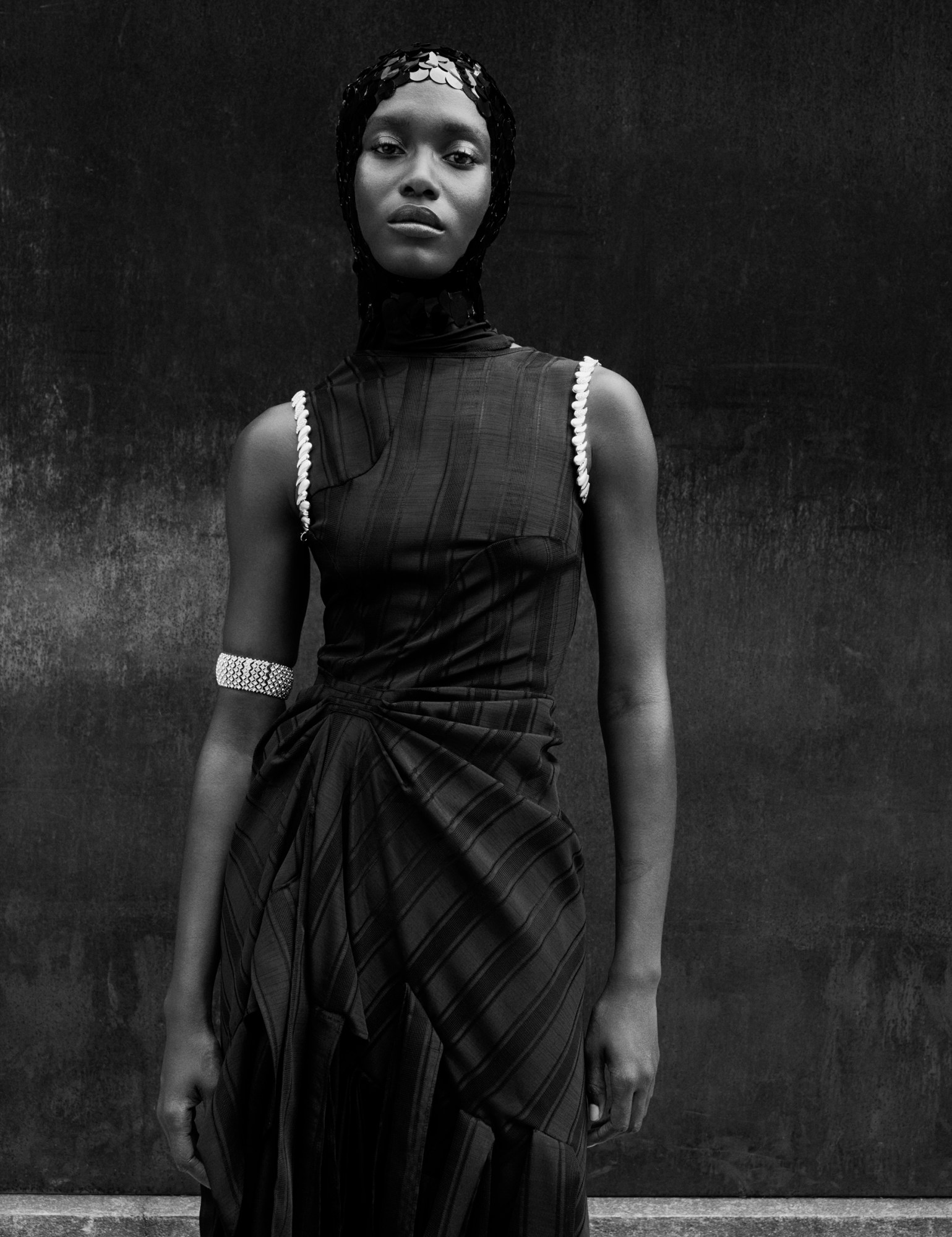
It marks something of an about-turn for Raul, who considers himself an innately extroverted aesthete: “I mean, I was always trying to stand out, even as a kid — my mom has a picture of me in pearls, a diaper and Air Force ones!” he shares. But fears that he’s been swept up by the tide of ‘quiet luxury’ and 90s minimalism currently dominating fashion are swiftly allayed when he relays the story at the collection’s heart. “The concept this season is Pentecostal thot,” Raul quips, regaling us with a vivid account of a scene he stumbled across earlier this year on a trip to the Dominican Republic, his parents’ homeland, which became the collection’s impetus. Pulling up to a friend’s house in El Hoyo, a semi-rural suburb on the country’s east coast, he was confronted with two worlds colliding — quite literally. “On one side, they were setting up this church on the sidewalk. Everyone brings their chairs out, this woman puts a podium up, the speakers are blasting, and she’s preaching to the crowd,” he says. “But on the other side, everyone’s turning up — the sex workers, the guys wrapped in their towels — doing drugs and just partying… being heathens, to those who believe that they are.” Despite this stark juxtaposition, Raul saw that the two parties shared an unexpected common ground. “At the end of it all, they’re both looking for a saviour,” he declares.
“One of those girls was probably looking at this preacher, thinking, ‘Damn, maybe I should look for Jesus…’ But then, her friend comes and gives her a beer or a bump, and she gets pulled right back. It’s the same thing with the people getting preached to, they’re probably looking at the other side, thinking about what it would be like to fall from grace. But then this woman is there screeching the gospel, and they’re brought back to the spot.”
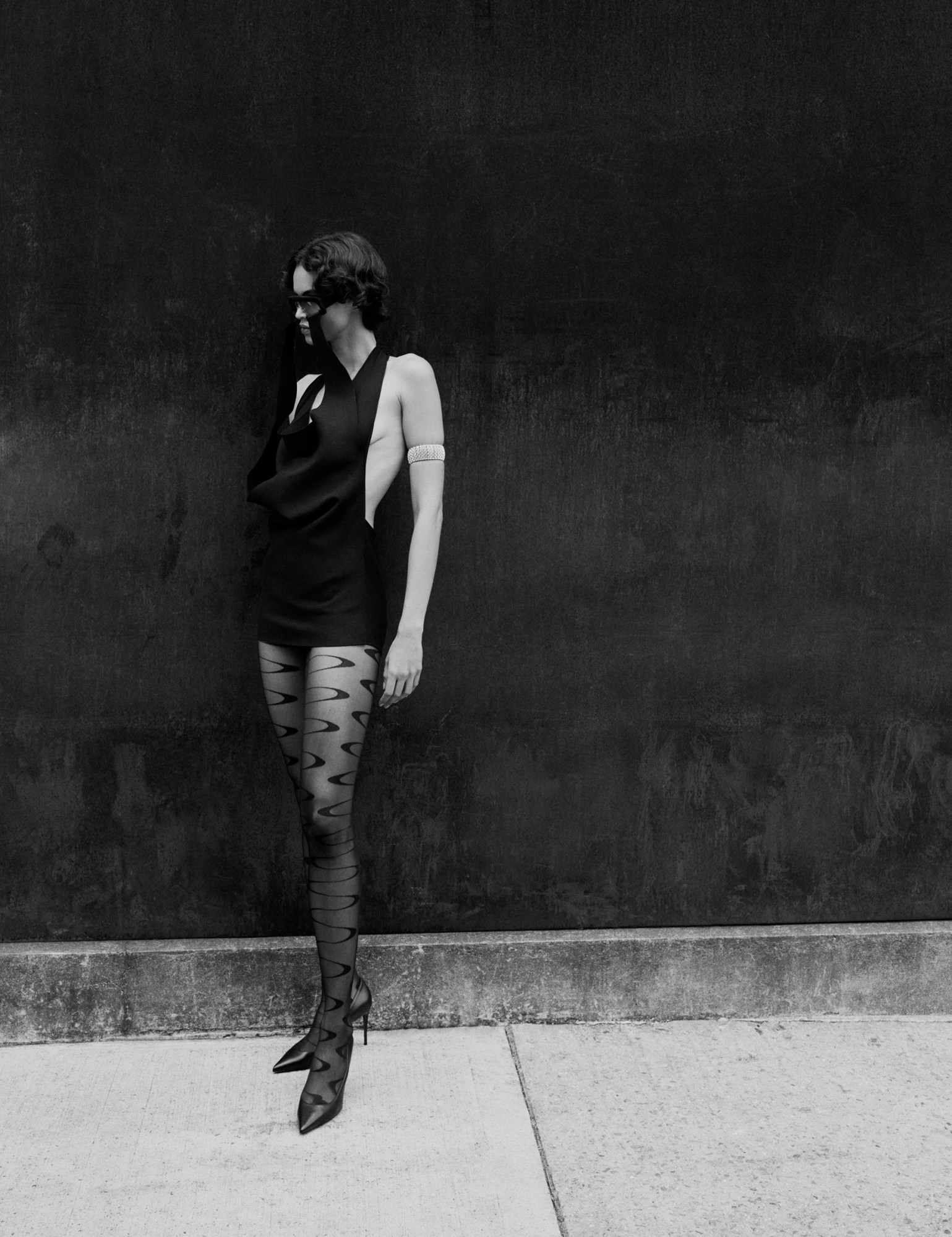
It was this cinematic-yet-chaotic vignette, coupled with the title of the Jey One dembow anthem that blared from a boombox in the background, that compelled Raul to christen the collection Socorro — Spanish for ‘help’ or ‘relief’ — an acknowledgement of the fact that “everyone’s getting on their knees on both sides of the divide, for different reasons,” he says with a slight air of jest. “But”, he continues more seriously, “everyone’s trying to move forward and find salvation in their own way. We all just need some type of help.”
The collection’s exploration of religious piety naturally assumed a prim and proper template, resulting in perhaps the most tailoring seen in a Luar collection to date. Sunday best examples came in a cream-hued crêpe that, Raul insists, “says that whoever’s wearing it is rich!”, complemented by Ana bags— the brand’s signature, self-consciously ladylike top handle inspired by the bags his mother and grandmother would carry — in faux stingray and ostrich finishes. Hunch-shouldered poplin shirts with champagne satin ties, and looks that nodded to the “Pentecostal men in button-up polo shirts and cargo shorts” who he’d spotted back in El Hoyo. This primness, though, was counterposed by a lustful hedonism — boys wearing rara skirts in crackled Japanese vinyl; single-shouldered tops and scanty briefs draped from scrims of diaphanous jersey, held in place with a single, Luar-logo buckle across the bust and hip.
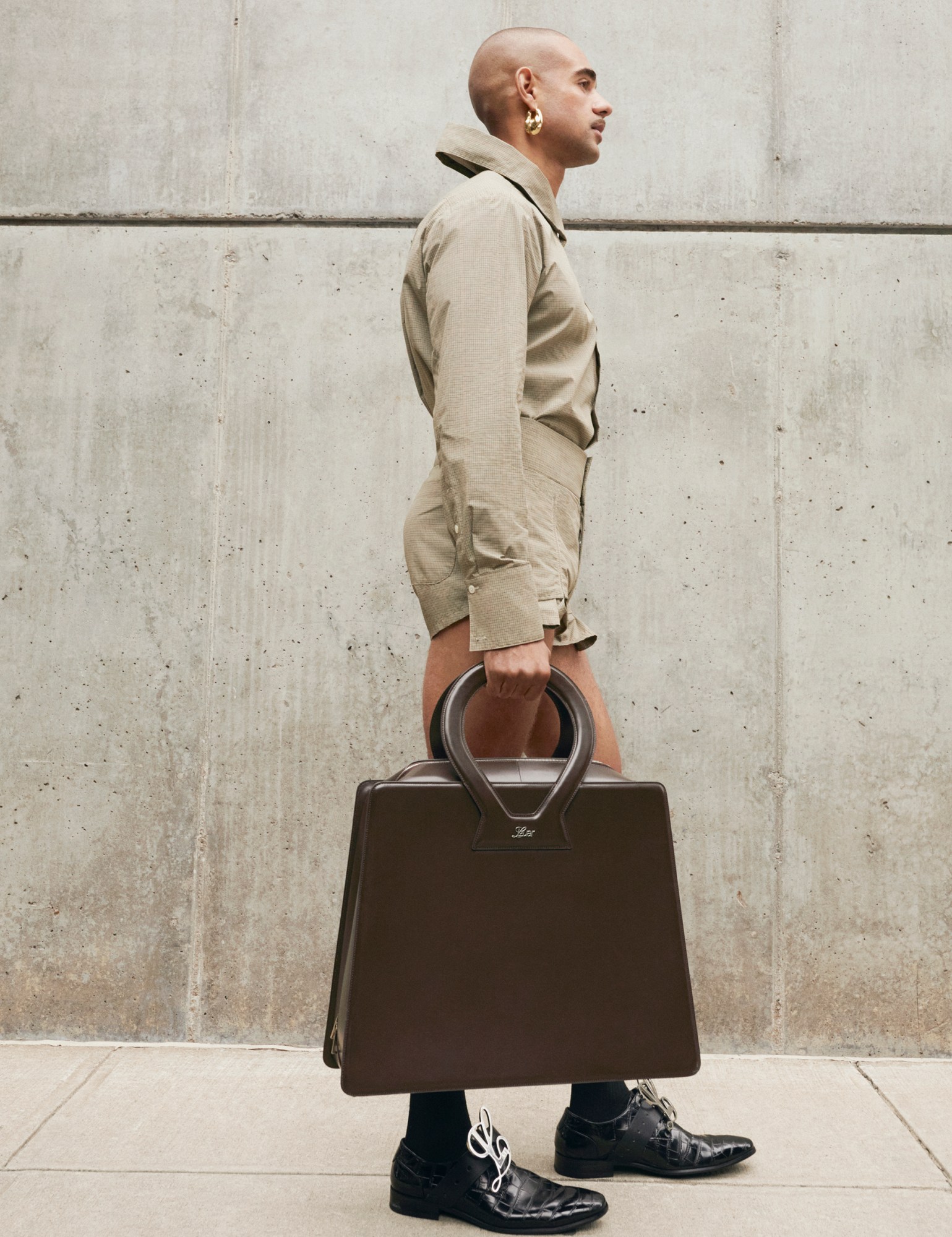
In certain looks, this tension was distilled into single pieces — peer closer at the prim crêpe jackets and full-length skirts and you see that they are composed from a jigsaw of buttoned-together panels, allowing the wearer to flash a bit of skin on the sly while sat in their pew. The möbius drapery, wool coats, and skirts that nod to the Hasidic garb he’s seen on the streets of South Williamsburg since childhood were constructed to cover the shins while exposing the calves, a part of the body he believes are “underappreciated! People are always drawn to the thigh, but it’s really all about the calf with the kitten heel,” Raul justifies. Saint-in-the-front, sinner-in-the-back, if you will.
The collection reflected an intrinsically Luar sensibility — an ability to imbue dress often deemed brash, or even ‘street’, with impeccable elegance and, in reverse, to roughen up haughty looks with a good bit of grit. Flitting between the rails, Raul summarises the success of, say, that puzzle-panelled crêpe blazer in terms of the agency it allows its wearer — they can choose how much skin to show. But that almost feels a little too cursory, glossing over the heart of what pieces like these say about the generosity at the heart of Luar’s mission.
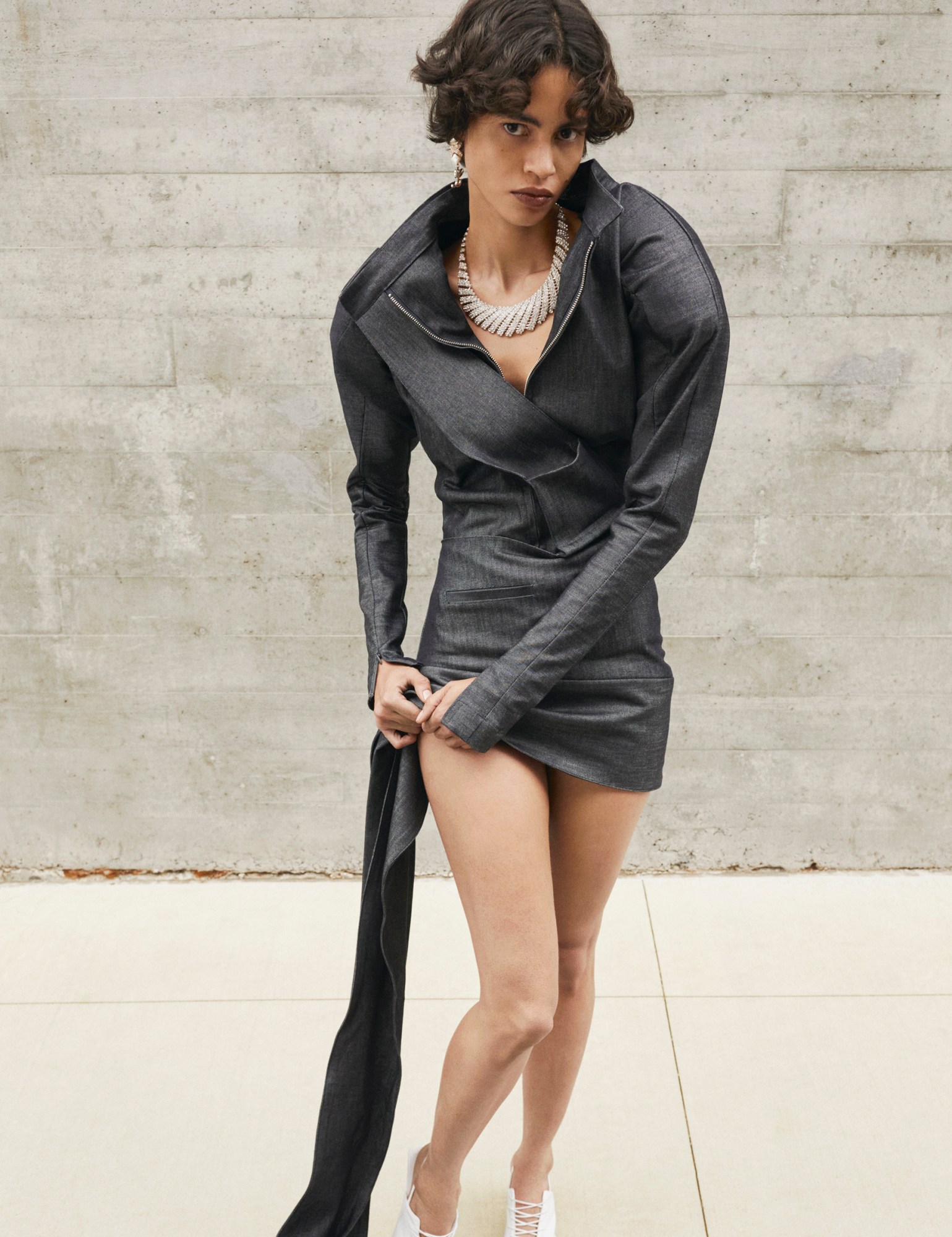
More than clothes that study characters straddling a moral divide, the collection embraces both parties with open arms, enabling them to walk whatever path to salvation they so choose. “It’s about making clothing to make people feel empowered and confident enough in their own skin that, when they walk into spaces where they’re not allowed, they look and feel good,” he says.
Raul has had to search for this confidence in himself. While Luar is now widely regarded as one of New York’s most vital wellsprings of fashion creativity, its ten-year journey to industry acclaim has hardly been smooth. From the outset, the brand has been marked by its outsider status, a badge both Raul and the label now defiantly wear but, when starting out, proved such an obstacle that it influenced his naming of the brand. Originally an AOL alias taken from the reversed spelling of his first name, on setting up his own brand ‘Luar’ acquired a new masking function: to deflect prejudiced assumptions around the label’s work. “I used ‘Luar’ as a weapon to lie to people and make them believe that it wasn’t a Latino boy behind it all,” he bluntly confides. “It sounds a little French: Luar. And then when I’d walk in, it was like, oh, surprise! Plot twist! It’s actually a hood boy from Brooklyn.”
The decade that has since passed has presented its fair share of challenges, culminating in Raul’s burnout-fuelled decision to place the brand on an eighteen-month hiatus in early 2020. But, compelled by a sense of duty to create the space that he never felt he had, Raul has remained steadfast in his mission to create a parallel ecosystem for those spurned by institutional frameworks, whatever they may be. “Growing up as a first-generation gay Dominican boy in New York, I never saw myself represented in the fashion industry, so it has always been my dream to create a legacy which dismantles the status quo and creates a community that centres and celebrates marginalised voices,” he reads from a manifesto of sorts saved on his phone’s Notes app, a crackle in his tone. “My garments are about more than aesthetics. Luar is a testament to the importance of having the courage to be unapologetically true, inspiring others to embrace their heritage, break barriers and celebrate their uniqueness. That’s the thing, the clothing is just a portion of it,” he says, looking up through teary eyes. “It’s just part of what I really want to do in the world.” In this light, Socorro’s subject matter is only made more poignant. After all, fashion — and his obstinate commitment to carving out a space of his own within it — has always been Raul’s salvation.
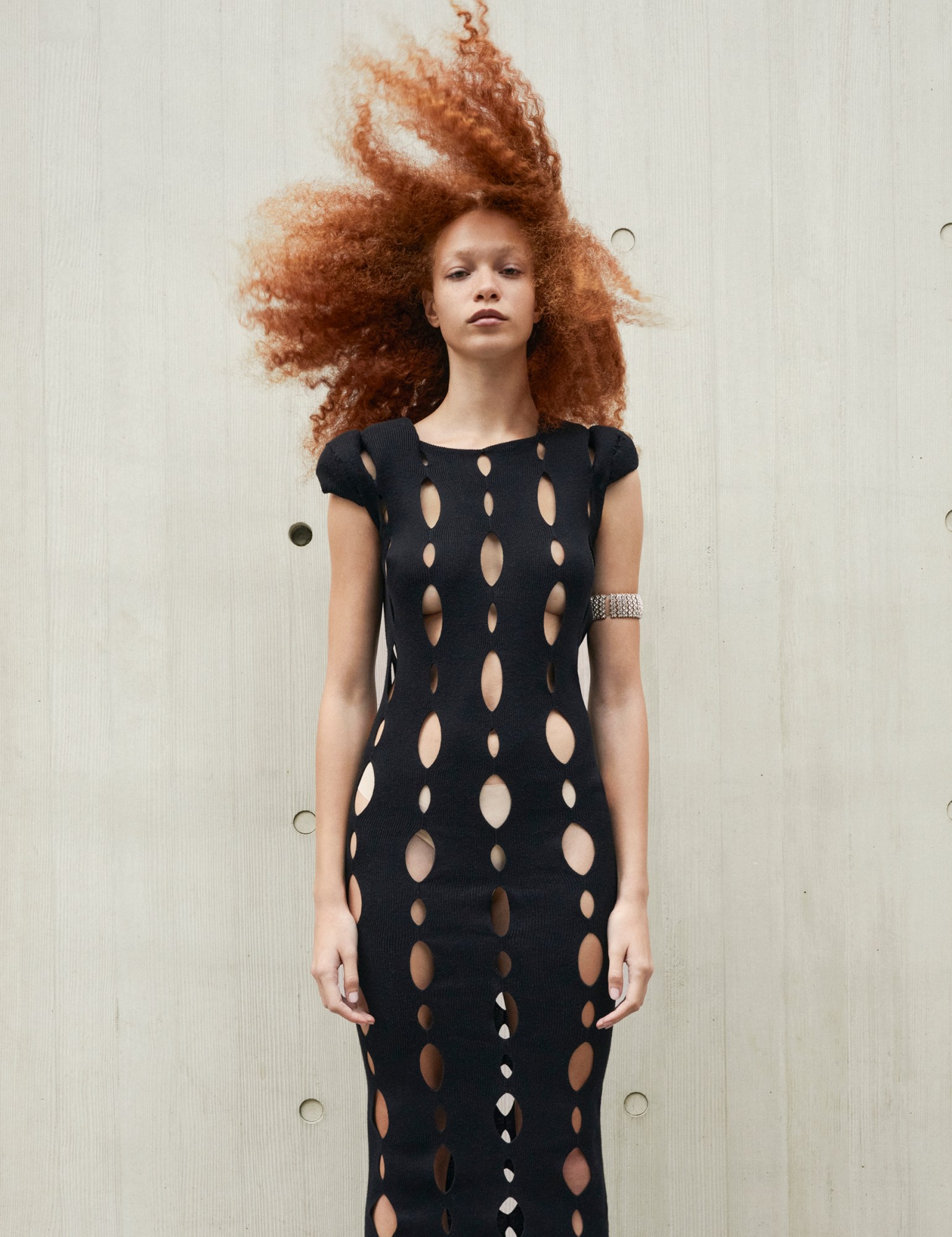
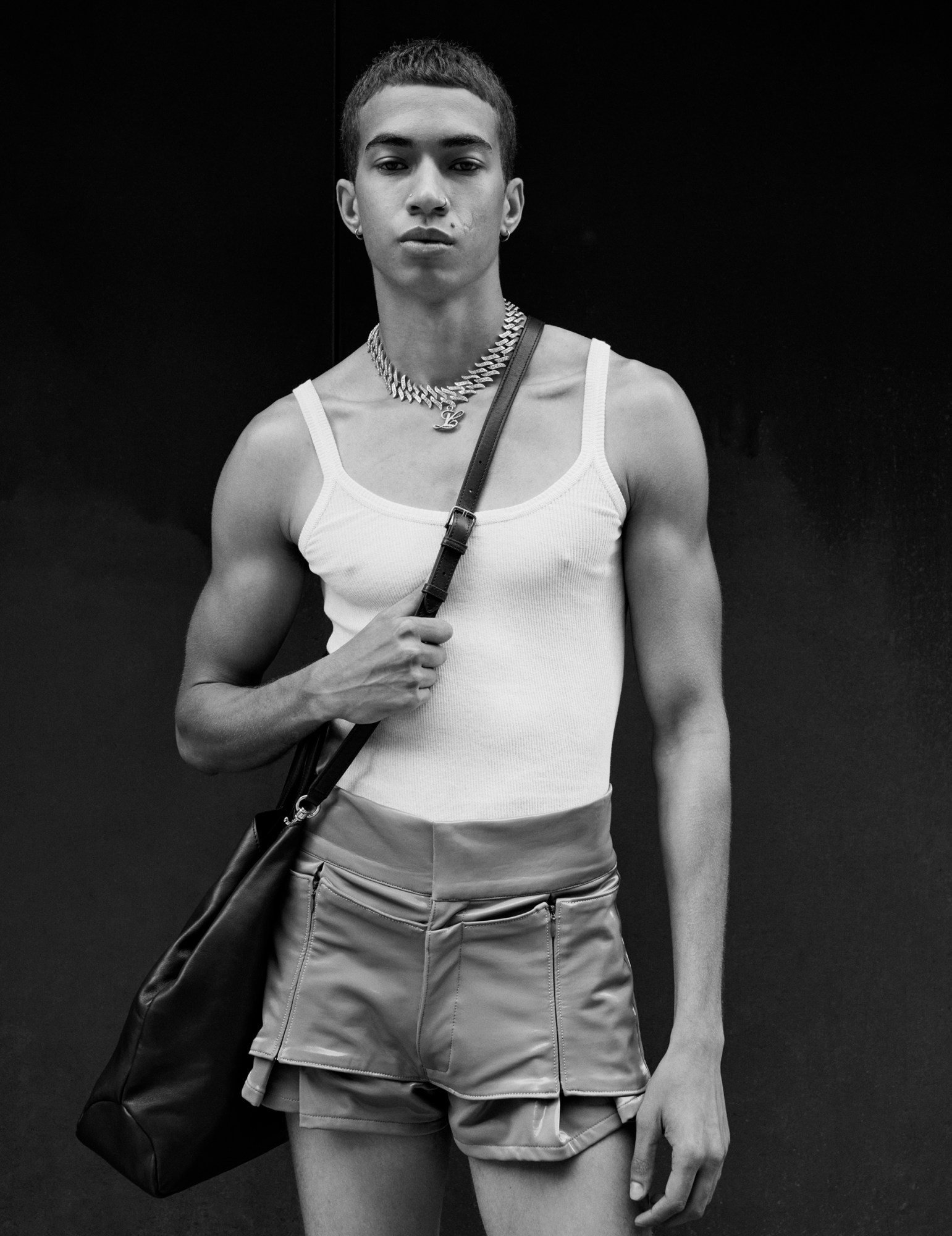

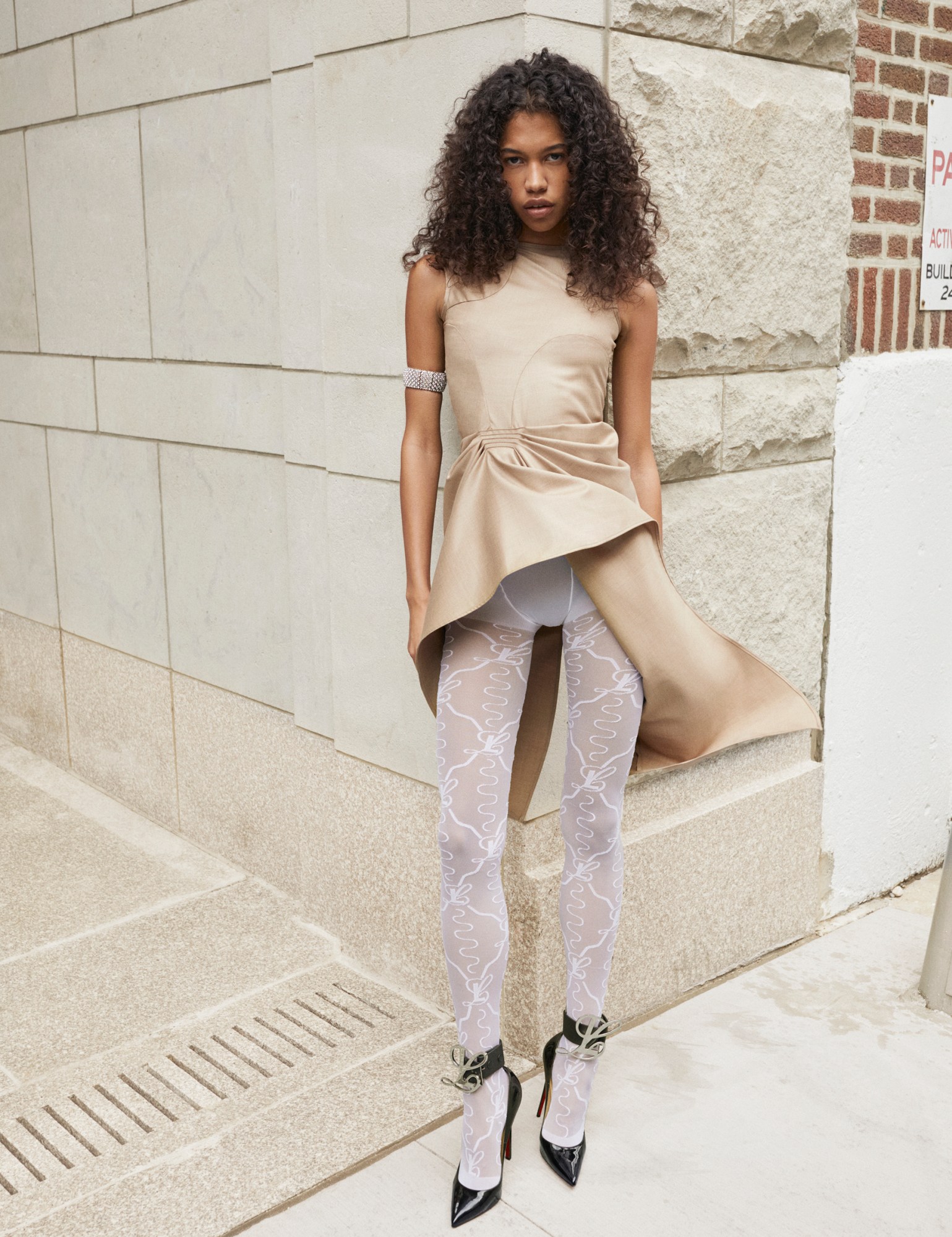

Credits
Photography Louise & Maria Thornfeldt
Fashion Milton Dixon III
Hair Tamara McNaughton at Bryant Artists
Makeup Dan Duran at Frank Reps using Shiseido
Nail Technician Nori at See Management using CHANEL
Photography Assistance Ben Kasun and Conor Ralph
Digital Technician Hope Christerson
Fashion Assistance Ricky Sangre and Rashied Black
Hair Assistance Jaz Shepard and LaMesha Mosley
Makeup Assistance Juna Uehara
Production Block Productions
Casting Director Samuel Ellis Scheinman for DMCASTING
Casting Assistance Evagria Serg for DMCASTING
Models Mariana Santana and Gracen Wilkins at Supreme, Alexis De La Rosa at New Pandemics, Essence Taylor at Off Shore, Tianna St Louis at Coven, Daeshawn Montgomery at AMR, Thursday at The Society and Sinn Apsara at Stetts
All clothing and accessories LUAR SS24
